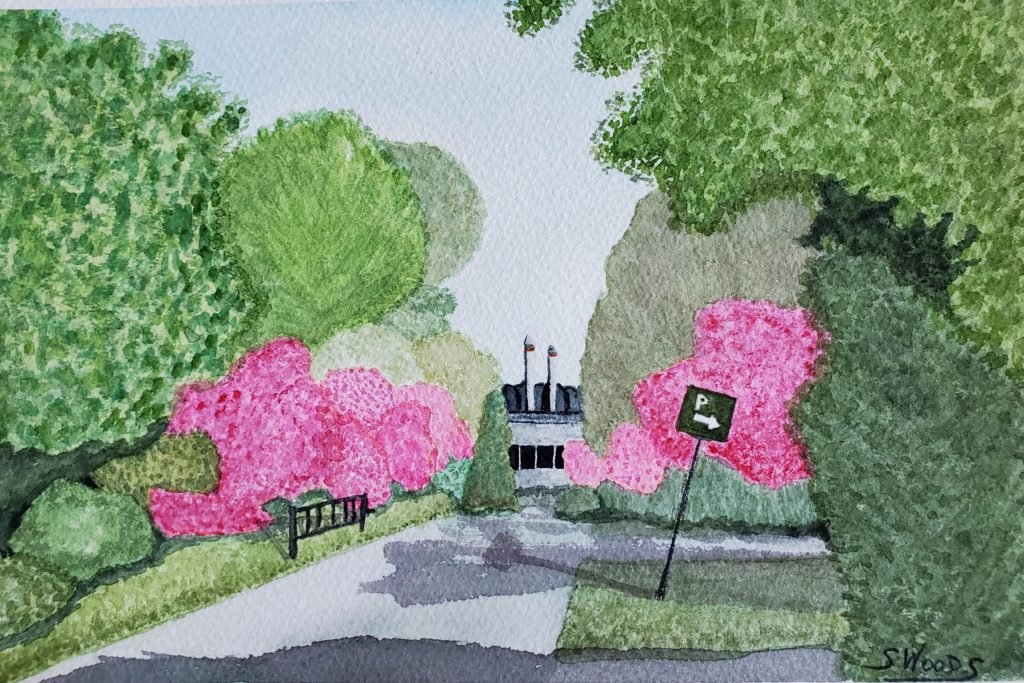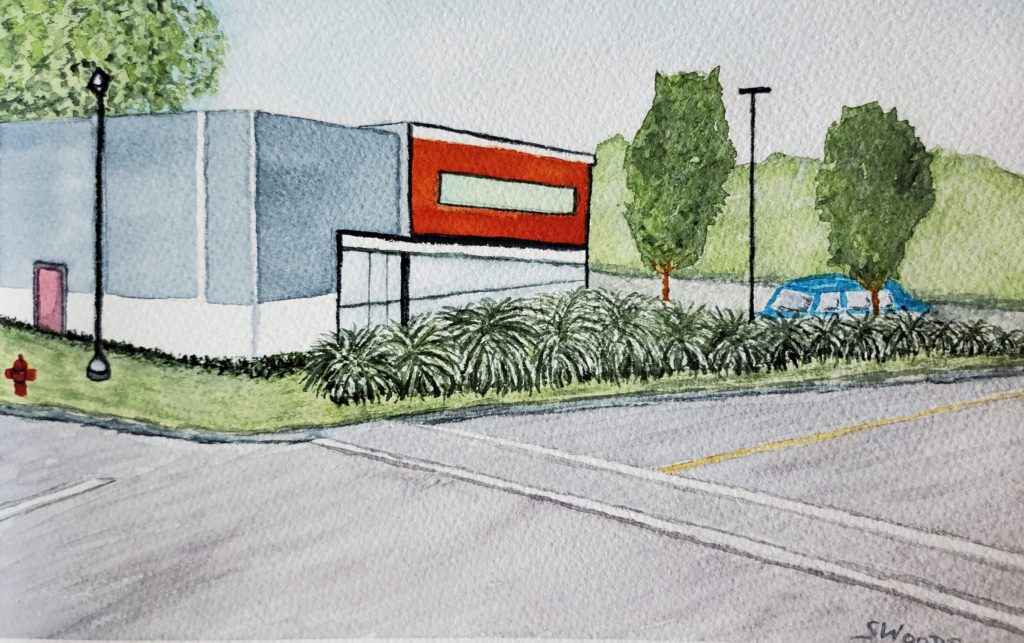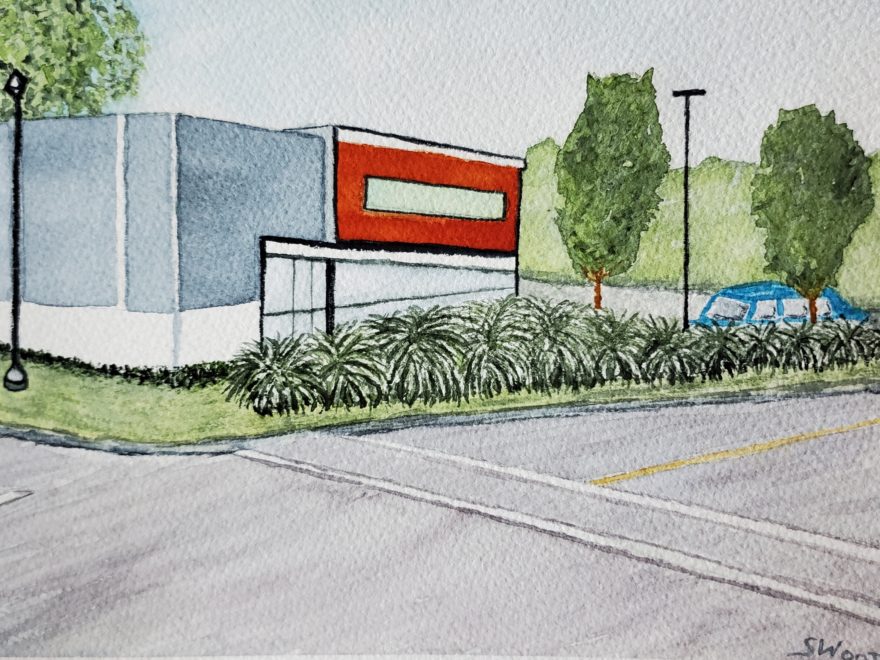Many of my recent posts have been about a new journey, one that I’ve chosen for myself rather than having it imposed upon me like my patient journey. Learning paint, and to draw, as part of my delayed-by-the-pandemic plan to integrate creative art more fully into my life.
As a path to reclaiming my life, really, in some ways. Reclaiming it from what? The simplest response would be from my rare disease, from CRPS and the intractable chronic pain that results from it. But I suspect that this feeling of ‘reclaiming’ goes beyond illness. It might be, at least in part, also be a reaction to the restrictions imposed on each of us by the global threat of COVID-19.
The larger portion of this feeling though, of this desire to ‘reclaim’ my life, originates – I believe – with my mild cognitive impairment. To put it succinctly, most of the time I simply don’t feel like me anymore. There’s something missing, deep inside.
An elusive sense that something should be there, but isn’t. I’m haunted by a ghost, of myself as I was. Today, so far, is a decent day in terms of my cognition. How do I know, how can I tell? My words are coming to me. I’m not struggling to recall what to call “that green thing with branches” (a tree).
Another indication that my brain is temporarily back in action is that my vocabulary is, for now, close to what it was when I was still able to work – before this cognitive impairment stole my career. I’ve just used the words succinctly and elusive, likely for the first time in months. It’s such a joy to have my words, my language, back in my brain… for however long it lasts this time around. So I’m writing, now!
At this point, I suppose I should elaborate on CRPS. Complex Regional Pain Syndrome is considered to be an autoimmune and neuro-inflammatory disease, affecting many different aspects of a person’s life. Its most common symptom is chronic pain, at the levels of both the joints and the skin.
The neuropathic facet of CRPS usually causes allodynia, an extreme sensitivity of the skin to touch. Often even a light breeze can trigger shingles-like nerve pain. For some people, their skin constantly feels as though its on fire or being burned.
Meanwhile the autoimmune aspects of CRPS cause symptoms that include full-body fatigue, joint pain, and sometimes joint deformations. There’s a long list of other signs and symptoms, although scientists can’t yet confirm which of these are autoimmune and which are neuro-inflammatory.
Cognitive impairments occur in more than half of patients with long-term CRPS, and we assume this is one of its neuro-inflammatory effects. But, as with so much about this rare disease, we’re not certain:
Significant neuropsychological deficits are present in 65% of patients, with many patients presenting with elements of a dysexecutive syndrome and some patients presenting with global cognitive impairment.” (1)
Libon, Schwartzman, Eppig, et al., Journal of the International Neuropsychological Society (JINS), 2010.
CRPS tends to originate in a limb, a hand or a foot, often after an inciting injury. For some patients the majority of their symptoms remain grouped around this limb, as is the case for my right hand, wrist, and lower arm.
Yet I also experience frequent full-body autoimmune fatigue, and a cognitive impairment severe enough to have cost me my beloved career in bioethics – also called biomedical ethics. Despite the fact that most of my symptoms are limited to my right arm, CRPS has affected my entire body – my entire life.
My desire to use art to reclaim some part of my life, I think, stems from this fact. That this rare disease leaves me often feeling less than myself. Diminished by my cognitive impairment, diminished by pain. Not always, but sometimes. It’s not a feeling to which I’ve become accustomed, and it’s not how I see myself. Nor how I wish to be seen.
On the worst days of my cognitive issues, my brain seems to switch to a more descriptive view as I lose my words. Consider my example above, saying “that green thing with branches” instead of “tree”. Back in 2019, about a year after I’d had to abandon my career due to the cognitive impairment, this more descriptive approach to describing the world gave me an idea.
What if I were able to harness that more descriptive perception, somehow? I’d always hoped to learn to paint someday, and each time I’ve taken a landscape or nature photo it has been with a vague intention of someday painting the scene. Maybe it was time, now, to begin…
That question was the catalyst, at the end of 2019, for my registration in several art courses. I signed up for community classes in watercolor painting – which has attracted me since childhood, due to its fluidity and transparency – along with creative journaling, creative writing, and more.
My cognitive impairment means that I can’t focus or concentrate on something for much more than an hour at a time, so short weekly sessions seemed ideal. These courses were all to have begun in March and April of 2020, and – of course – each was cancelled by COVID before the first session.
As the pandemic dragged on into 2021, I decided in early January to seek out some virtual options for beginners, rather than waiting any longer to try to learn to paint. After all, I’d already bought all the supplies!
And here we are, four months later. I first picked up a paint brush, for watercolours, on January 27th, and have taken a wide range of virtual courses since then. I’ve participated in live virtual sessions from England, Vancouver, norther British Columbia, and right here in Montreal. With more to come, over the spring and summer months.
All for the fun of it! I may never be a fantastic artist, but I do feel much more like “me” again. Learning and creating – even if only writing policies and well-designed presentations – were so much a part of my work life that it never occurred to me how much I missed these activities. The interactive aspect of these weekly virtual courses or events has been lovely as well, particularly for a beginner like me!

Watercolour painting & photo ©Sandra Woods 
Watercolour painting & photo ©Sandra Woods
These two paintings, for example, were for a class assignment earlier this month to paint “urban landscapes”. I bike by these buildings on a regular basis, and had noticed their beautiful flowering trees and shrubs in mid-May… but I’d never had thought of them as subjects for watercolour paintings. Art is subjective, so I’ll let YOU decide whether you like them or not ‘-) They are fairly accurate in terms of proportion and colour, and those are the two elements I was trying to focus on for these, so I’m quite happy with them – as beginner work!
Does it feel as though something has been missing from your life, whether due to illness, pain, or other reasons? Have you considered whether another activity might be able to fill some of that void for you – the way learning to paint has for me? Just for fun, even?
Just a thought, something to consider. Would I prefer to have my career, and my full cognition, back? Of course I would! I still miss my job, still mourn for my career. But if that’s not possible, then I’ve realized how important it is for me to continue to learn – in whichever ways I’m able. Art is an infinite subject for learning, so I seem to have stumbled upon a good option for me. Is there a good one out there for you?
As always, thanks so much for stopping by. Stay safe, keep well, and take care of yourself. All the best!
Reference
(1) Libon, David J, Schwartzman, Robert J, Eppig, Joel, et al. Neuropsychological deficits associated with Complex Regional Pain Syndrome. J International Neuropsychological Society (JINS). 2010; 16, 566–573. Online 19 Mar 2010. doi:10.1017/S1355617710000214. Online:
https://www.cambridge.org/core/journals/journal-of-the-international-neuropsychological-society/article/neuropsychological-deficits-associated-with-complex-regional-pain-syndrome/F56D83F23BB269C52DDF43198BA0536D#

